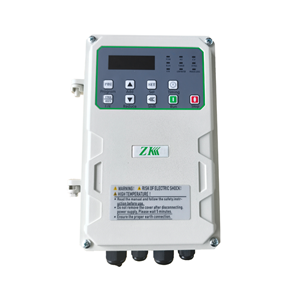The Market Expansion of Photovoltaic Water Pump Inverters
Growing Demand in Agricultural and Rural Areas
The demand for photovoltaic water pump inverters in agricultural and rural areas is booming in 2025. In agriculture, water is a vital resource for crop growth, and traditional water pumping methods often rely on fossil fuels or grid electricity, which are costly and environmentally unfriendly. Photovoltaic water pump systems, powered by inverters, offer a sustainable and cost-effective alternative. They are particularly suitable for irrigation in areas with abundant sunlight, such as arid and semi-arid regions. In rural areas, especially those without reliable access to the electrical grid, photovoltaic water pump inverters are being widely used for domestic water supply. The ease of installation and low maintenance requirements of these systems make them popular among rural communities. For example, in many parts of Africa and Asia, small-scale farmers are adopting photovoltaic water pump systems to improve agricultural productivity and ensur
e a stable water supply for their families. The market for agricultural and rural applications of photovoltaic water pump inverters is expected to continue its rapid growth in the coming years, driven by government initiatives to promote sustainable agriculture and improve rural living standards.
3.2 Increasing Adoption in Industrial and Commercial Sectors
The industrial and commercial sectors are also showing a growing interest in photovoltaic water pump inverters in 2025. In industries such as mining, manufacturing, and food processing, water is required for various processes, and the use of solar-powered water pumps can significantly reduce energy costs. Moreover, in commercial buildings, such as hotels, resorts, and shopping malls, photovoltaic water pump systems can be used for landscape irrigation and water feature operations. The environmental benefits of using solar energy, along with potential cost savings, are motivating more industrial and commercial enterprises to invest in these systems. For instance, some large-scale mining operations in Australia are replacing their diesel-powered water pumps with photovoltaic water pump systems, not only reducing their carbon footprint but also saving on fuel costs in the long run. As the cost of photovoltaic technology continues to decline and the performance of inverters improves, the adoption of photovoltaic water pump inverters in the industrial and commercial sectors is likely to increase further.
3.3 Global Market Growth and Regional Trends
On a global scale, the market for photovoltaic water pump inverters is experiencing robust growth in 2025. Asia-Pacific, with its large population, vast agricultural areas, and growing industrial base, is the largest market for these inverters. Countries like China, India, and Indonesia are leading the way in terms of demand, driven by government policies to promote clean energy and improve water supply infrastructure. In North America and Europe, the market is also expanding steadily, supported by a high awareness of environmental protection and the availability of incentives for renewable energy projects. In the Middle East and Africa, the abundant sunlight and the need for reliable water supply solutions in arid regions are fueling the growth of the photovoltaic water pump inverter market. Latin America is also emerging as a promising market, with countries like Brazil and Mexico investing in solar-powered water pumping systems for agricultural and rural development. The global market for photovoltaic water pump inverters is expected to reach new heights in the coming years, with continuous innovation and market penetration in different regions.
4. Challenges and Solutions
4.1 High Initial Cost
Despite the many advantages, the high initial cost of photovoltaic water pump inverters remains a significant barrier to wider adoption. The cost of the inverter itself, along with the solar panels, energy storage components (if applicable), and installation expenses, can be relatively high for some users, especially in developing countries. To address this challenge, manufacturers are working on reducing production costs through economies of scale. As the demand for photovoltaic water pump inverters increases, mass production can lower the unit cost. Additionally, technological advancements are leading to more efficient and cost-effective designs. For example, the development of integrated inverters that combine multiple functions into a single unit can reduce manufacturing and installation costs. Governments and international organizations are also playing a role by providing subsidies, grants, and low-interest loans to encourage the adoption of solar-powered water pumping systems. These financial incentives can significantly reduce the upfront cost burden for users and make the technology more accessible.
4.2 Grid Integration Issues
In areas where the photovoltaic water pump system is connected to the grid, grid integration issues can arise. The intermittent nature of solar power generation can cause fluctuations in the electrical grid, and the inverters need to be able to operate in harmony with the grid to ensure stable power supply. To solve this problem, inverter manufacturers are developing advanced grid - friendly features. For example, some inverters are equipped with intelligent control algorithms that can adjust the power output of the solar panels to match the grid demand. They can also detect grid faults and automatically disconnect from the grid to prevent damage. Additionally, the development of smart grid technologies is facilitating better integration of photovoltaic water pump systems. Smart grids can communicate with the inverters in real-time, providing information about grid conditions and enabling more efficient operation. In some regions, regulatory authorities are also implementing standards and guidelines to ensure the safe and stable integration of solar-powered water pumping systems with the grid.
4.3 Maintenance and Reliability
Ensuring the long-term maintenance and reliability of photovoltaic water pump inverters is crucial for their successful operation. Since these systems are often installed in remote areas, access to maintenance services can be difficult. To improve reliability, manufacturers are using high-quality components and conducting rigorous testing during the production process. They are also providing detailed operation and maintenance manuals to users. In addition, some companies are offering remote monitoring and predictive maintenance services. Through IoT technology, the inverter's performance can be continuously monitored, and potential failures can be predicted in advance. This allows for timely maintenance and reduces the risk of system downtime. Training programs are also being organized to educate local technicians and users on basic maintenance procedures, empowering them to handle minor issues on their own and ensuring the smooth operation of the photovoltaic water pump system over its lifespan.
5. Conclusion
In 2025, the development of photovoltaic water pump inverters is characterized by significant technological advancements, expanding market opportunities, and continuous efforts to overcome challenges. The improved efficiency, smart control features, and integration with energy storage are making these inverters more attractive for a wide range of applications. The growing demand in agricultural, rural, industrial, and commercial sectors, along with the global market growth, indicates a bright future for the photovoltaic water pump inverter industry. However, challenges such as high initial cost, grid integration issues, and maintenance requirements still need to be addressed. With continued innovation, collaboration between industry players, and support from governments and international organizations, photovoltaic water pump inverters are expected to play an even more significant role in providing sustainable water supply solutions and contributing to the global transition towards clean energy in the years to come.
photovoltaic-water-pump-invertersphotovoltaic-water-pump-invertersphotovoltaic-water-pump-invertersphotovoltaic-water-pump-invertersphotovoltaic-water-pump-inverterspump inverterpumppump inverter inverterpump inverterpump inverterpump inverterpump inverter
photovoltaic-water-pump-invertersphotovoltaic-water-pump-invertersphotovoltaic-water-pump-photovoltaic-water-pump-invertersphotovoltaic-water-pump-inverters




